iPhone 6 and iPhone 6 Plus: Preliminary Results
by Joshua Ho on September 22, 2014 7:07 AM EST- Posted in
- Smartphones
- Apple
- Mobile
- iOS
- iPhone 6
- iPhone 6 Plus
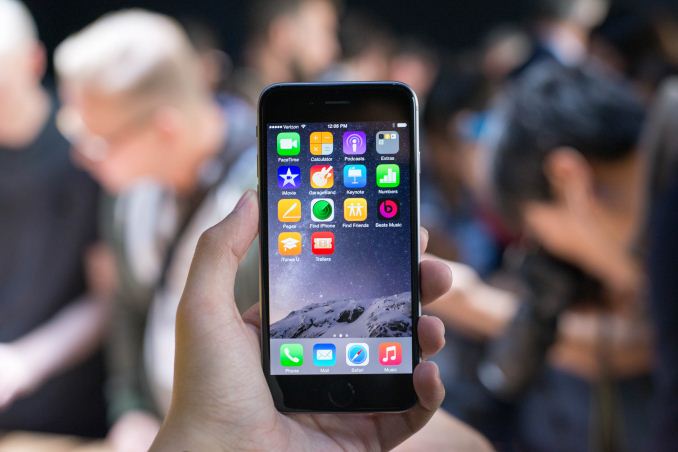
While we’re still working on the full review, I want to get out some preliminary results for the iPhone 6. For now, this means some basic performance data and battery life, which include browser benchmarks, game-type benchmarks, and our standard web browsing battery life test. There’s definitely a lot more to talk about for this phone, but this should give an idea of what to expect in the full review. To start, we'll look at the browser benchmarks, which can serve as a relatively useful proxy for CPU performance.
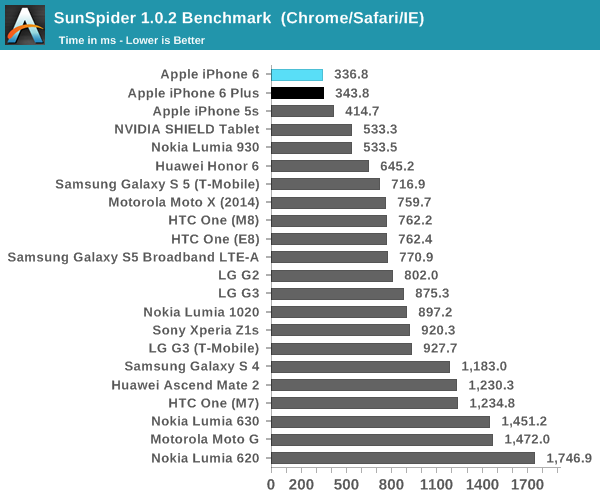
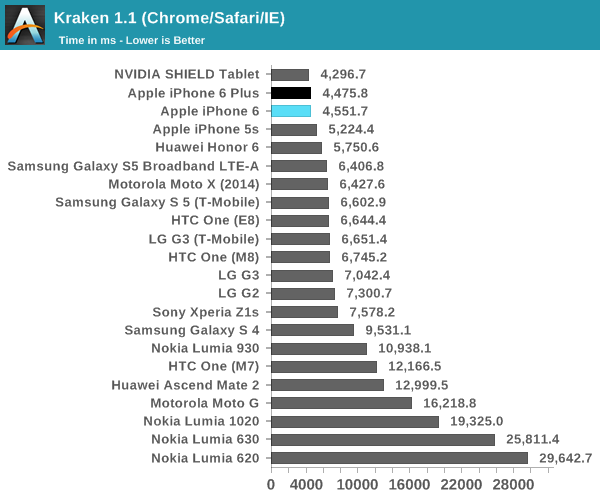
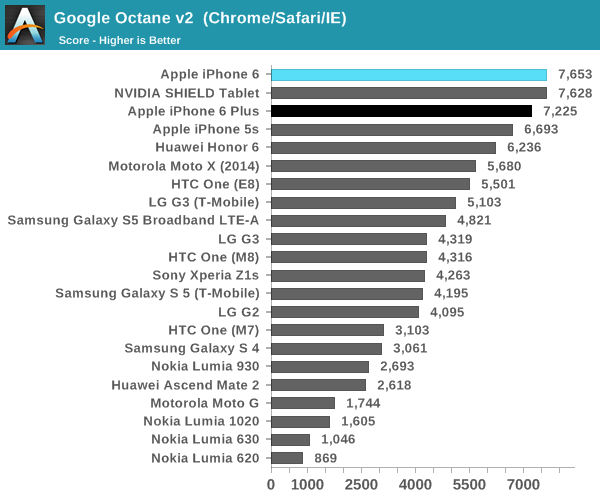
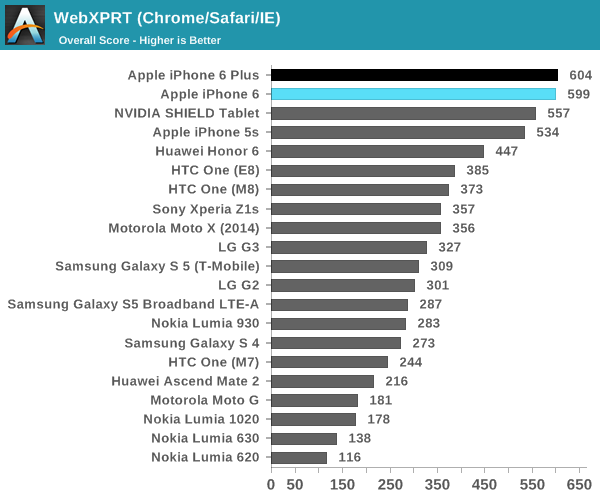
There are a few interesting observations here, as a great deal of the scaling is above what one would expect from the minor frequency bump when comparing A7 and A8. In SunSpider, we see about a 13% increase in performance that can't be explained by frequency increases alone. For Kraken, this change is around 7.5%, and we see a similar trend across the board for the rest of these tests. This points towards a relatively similar underlying architecture, although it's still too early to tell how much changes between the A7 and A8 CPU architectures. Next, we'll look at GPU performance in 3DMark and GFXBench, although we're still working on figuring out the exact GPU in A8.
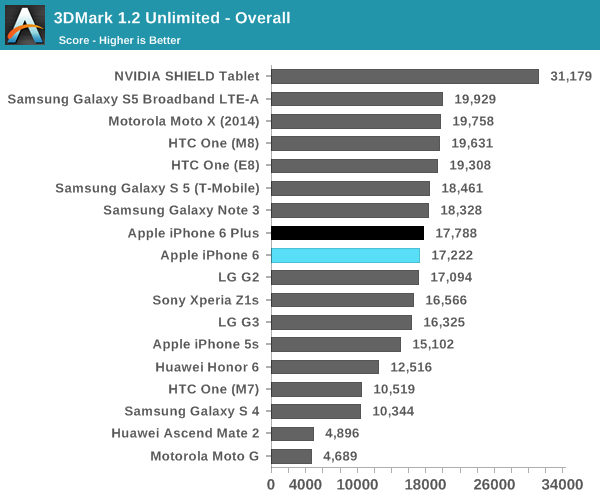
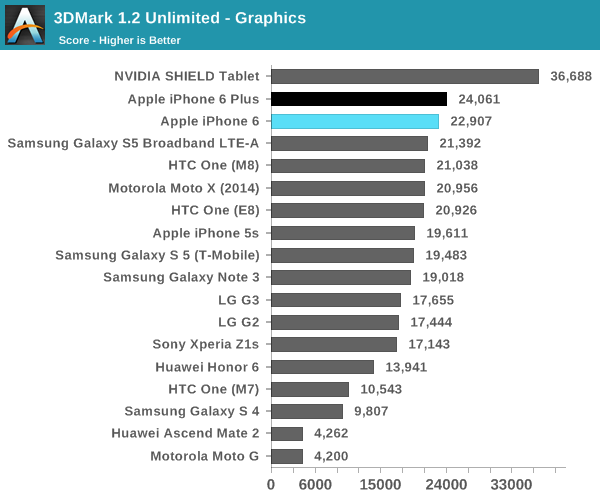
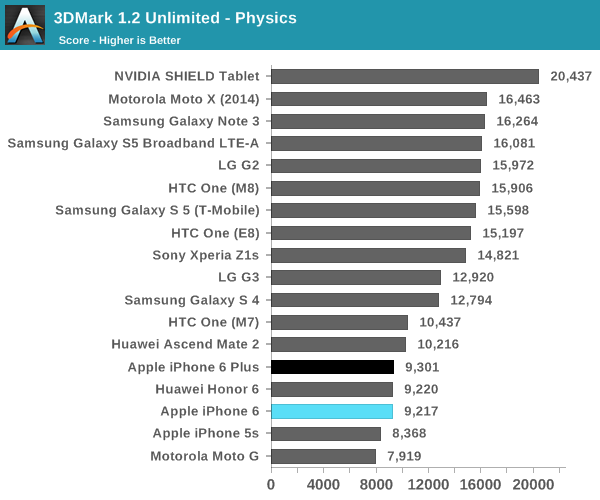
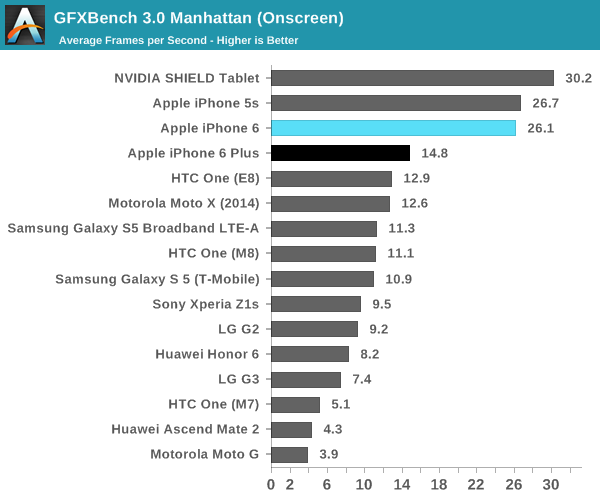
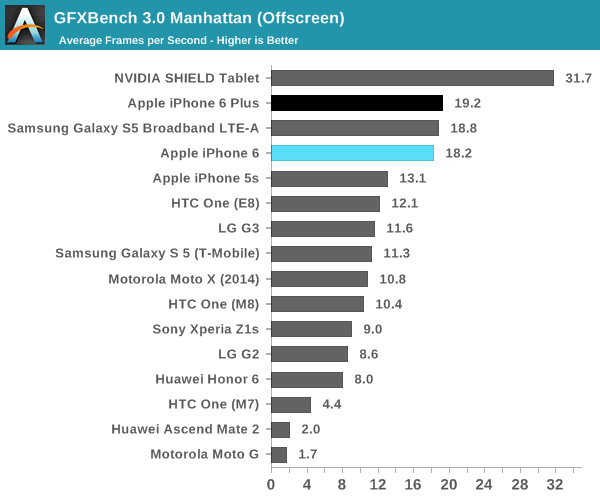
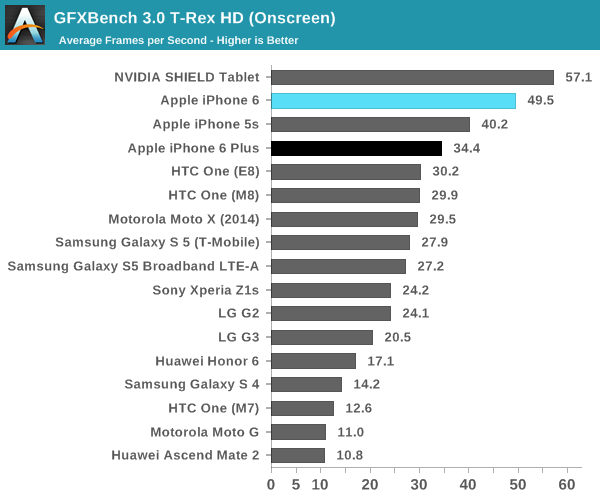
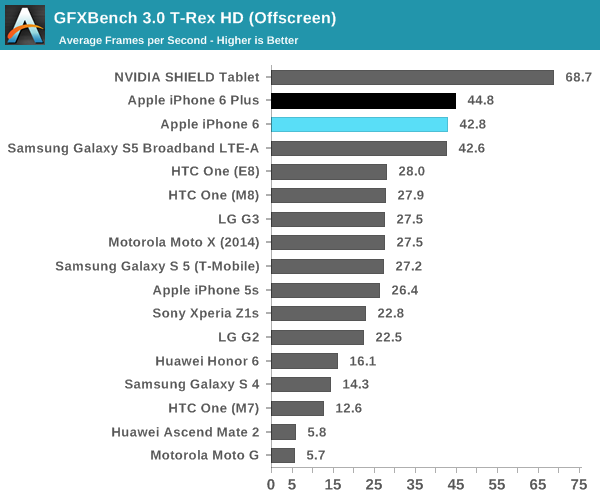
In in GPU benchmarks, we generally see a pretty solid lead over the competition for the iPhone 6/A8. It's seems quite clear that there is a significant impact to GPU performance in the iPhone 6 Plus due to the 2208x1242 resolution that all content is rendered at. It seems that this is necessary though, as the rendering system for iOS cannot easily adapt to arbitrary resolutions and display sizes. Before we wrap up this article though, I definitely need to address battery life. As with all of our battery life tests, we standardize on 200 nits and ensure that our workload in the web browsing test has a reasonable amount of time in all power states of an SoC.

As one can see, it seems that Apple has managed to do something quite incredible with battery life. Normally an 1810 mAh battery with 3.82V nominal voltage would be quite a poor performer, but the iPhone 6 is a step above just about every other Android smartphone on the market. The iPhone 6 Plus also has a strong showing, although not quite delivering outrageous levels of battery life the way the Ascend Mate 2 does. That's it for now, but the full review should be coming in the near future.










316 Comments
View All Comments
Ryan Smith - Monday, September 22, 2014 - link
The Physics graph has been fixed. We had copied over the value for the wrong SHIELD. Thanks for pointing it out.Ex0dus1985 - Monday, September 22, 2014 - link
I have repeatedly run both the Manhattan onscreen and T-Rex onscreen tests on my iPhone 6 Plus and have received much better results than in this test. 37.1 fps and 52 fps respectively. I'd suggest to the author they re-run the benchmarks again.kron123456789 - Tuesday, September 23, 2014 - link
Did you notice, what resolution is used? I know there was 1136x640 resolution. If it was native resolution, there wasn't be much difference between offscreen and onscreen results.tuxRoller - Monday, September 22, 2014 - link
Is there a reason you aren't using the basemark battery test? I'd asked about this before and I was told that you used it often (and basemark clearly works on ios).Shatta_AD - Monday, September 22, 2014 - link
I'm surprised all these people claiming their phone(s) have 8-octo Cores doesn`t understand the concept behind the implementation of the BIG.little configuration. Most implementations actually doesn`t use all 8 cores. At any one time, EITHER the `BIG`(4) cores are processing heavy threads or the `little`(4) cores are processing light threads. So technically, all these marketing gimmicks of so called `Octocore` SoCs are in fact `Quadcore` systems.tuxRoller - Monday, September 22, 2014 - link
It really depends on the implementation. I'd imagine all of the recent versions of big.LITTLE can make use of gts.Laststop311 - Monday, September 22, 2014 - link
It's using the 6 core power vr rogue gpu according to shots of the die. i think its called the power vr rogue 6600Laststop311 - Monday, September 22, 2014 - link
its the gx6650 the a7 used a 4 cluster rogue gpu apples added 2 more clusters to gain the 50% jump in performance, it's the exact same architecture and same gpu just with 2 more gpu clusterskron123456789 - Tuesday, September 23, 2014 - link
It is not so "exact same" architecture. It's PowerVR Series 6 in A7 and PowerVR Series 6XT in A8.Sofia - Monday, September 22, 2014 - link
iPhone 6 and iPhone 6 plus are obviously stronger than their competitors in general. This overview brings Apple new smartphones.appiphany.com.au